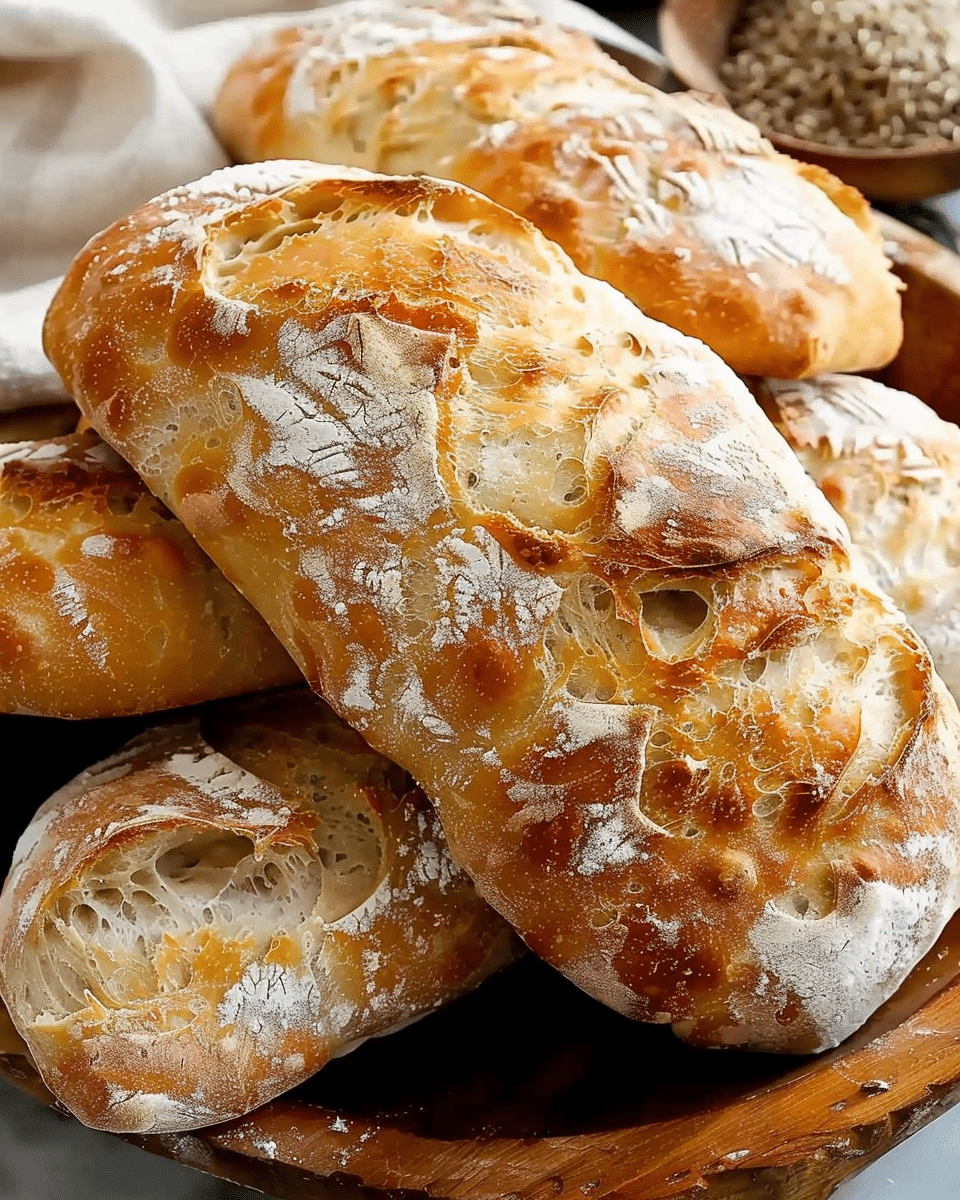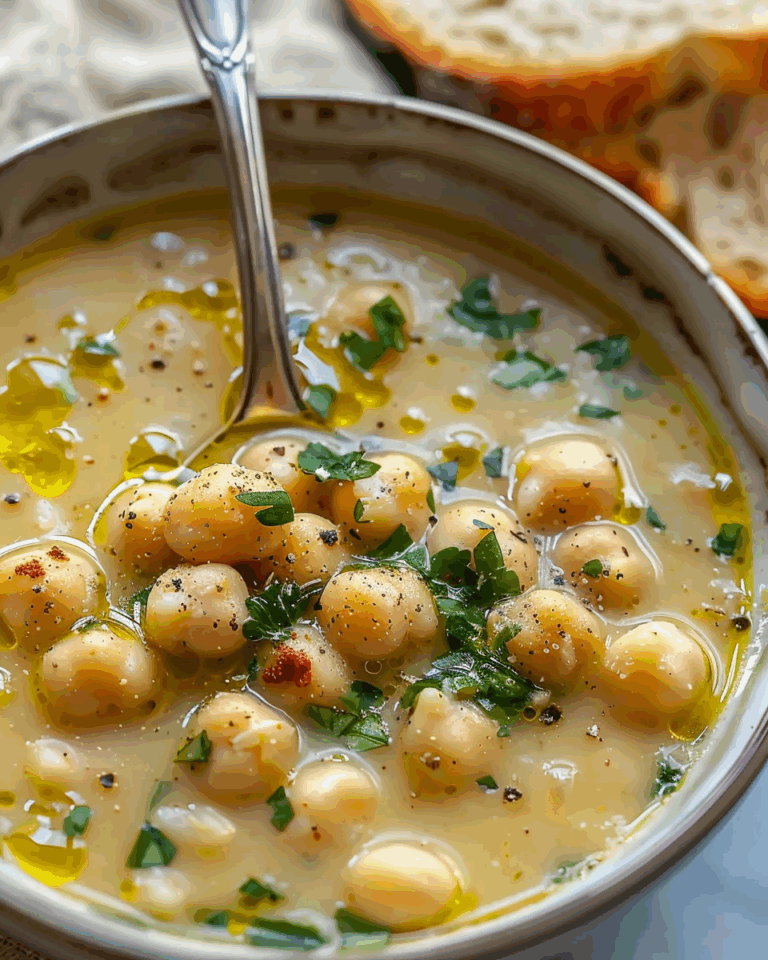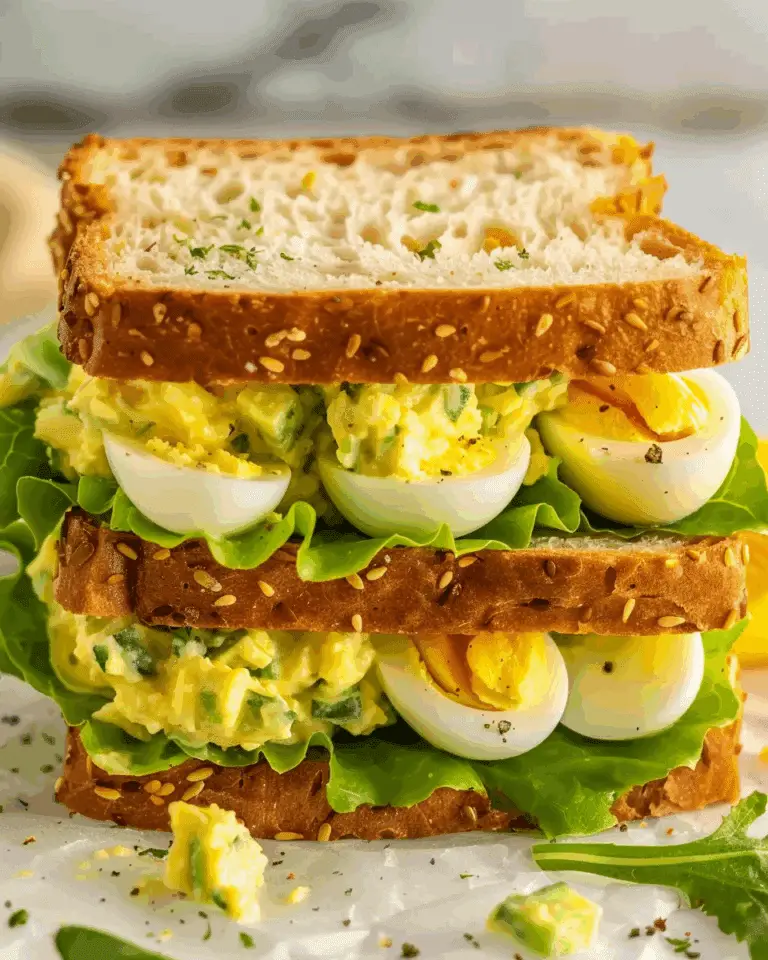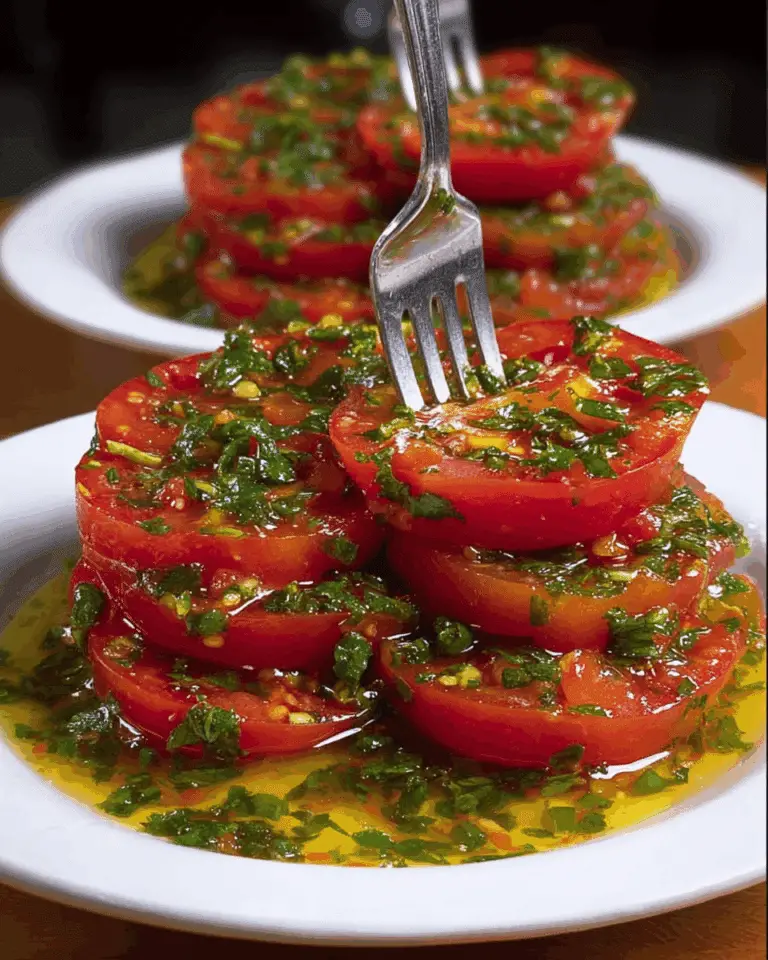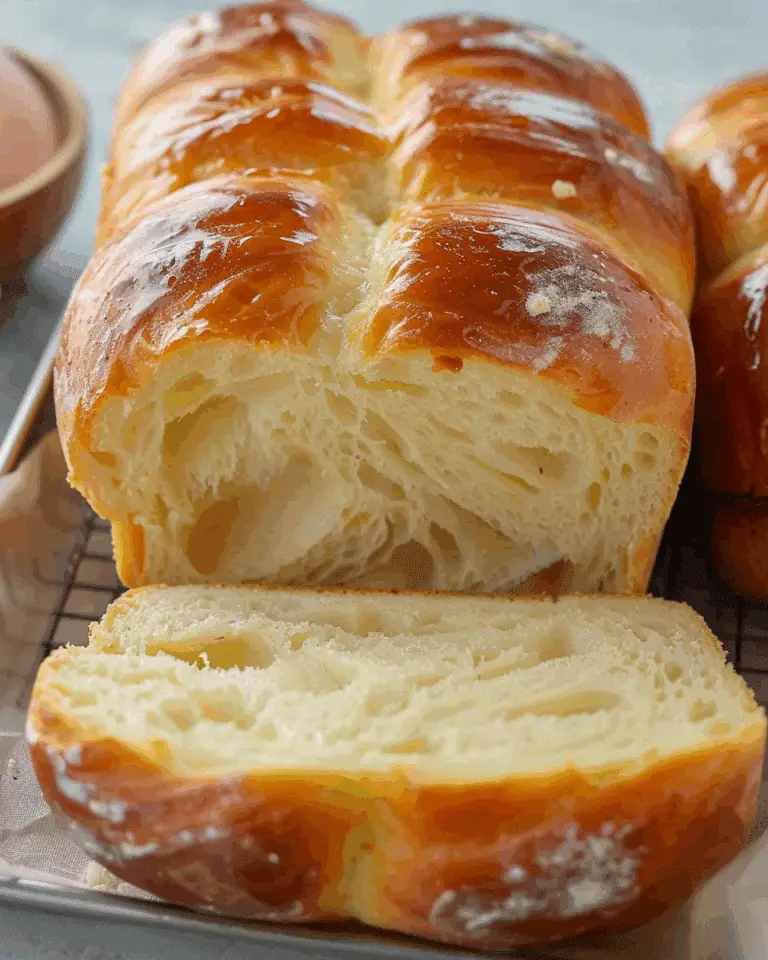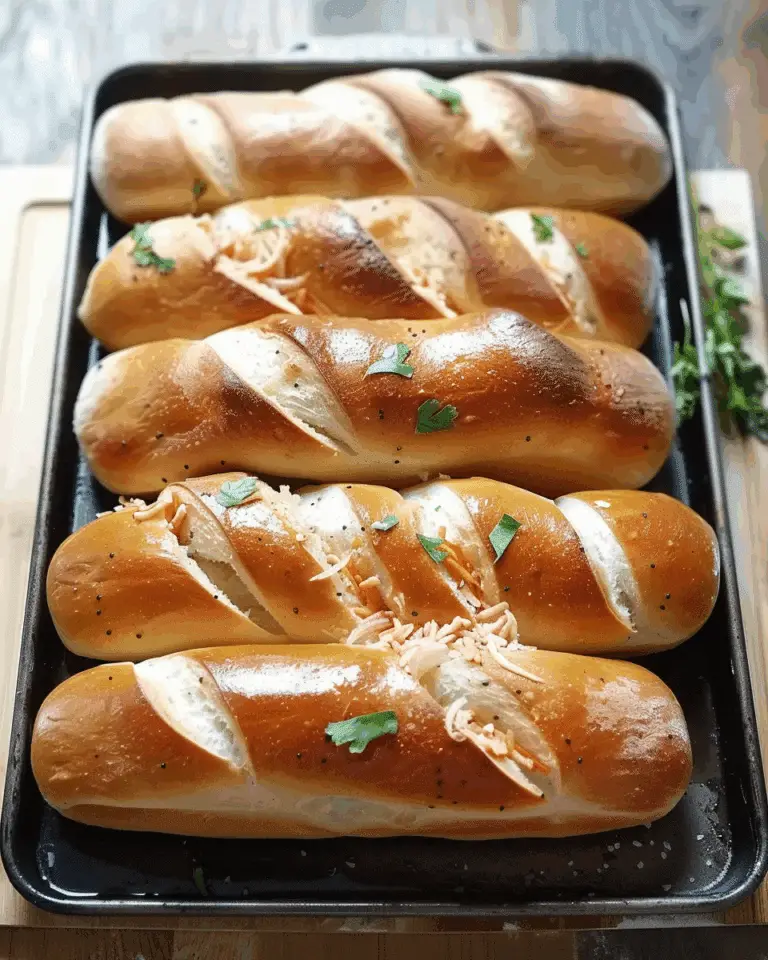I’m truly excited about this ciabatta bread—it features an airy, open crumb, a crisp golden crust, and a rustic, slightly flat shape. Each bite is light, chewy, and full of flavor, making it ideal for sandwiches, toasts, or just dipping in olive oil.
Why You’ll Love This Recipe
I adore this recipe because it delivers bakery-quality ciabatta with minimal fuss. The high-hydration dough creates those signature big holes, and the crisp crust with a soft, chewy interior is irresistibly satisfying. It’s impressive yet surprisingly easy once you get comfortable with the feel of tacky dough.
Ingredients
(Here’s a tip: Check out the full list of ingredients and measurements in the recipe card below.)
-
Bread flour (high-protein flour)
-
Instant yeast
-
Salt
-
Water (lukewarm)
-
Olive oil (optional, for added flavor and crust sheen)
Directions
-
I whisk together the bread flour, instant yeast, and salt in a large bowl.
-
I pour in lukewarm water and olive oil, stirring with a spatula until a sticky, shaggy dough forms.
-
I let the dough rest (autolyse) for about 30 minutes—this helps develop gluten without kneading.
-
After resting, I perform a series of stretch-and-folds: lifting one side of the dough, folding it over the center, rotating the bowl, and repeating about 4 times. I repeat this fold every 30 minutes for 2 hours.
-
I cover the bowl and let the dough bulk ferment for another 1 to 1½ hours, until it has nearly doubled and shows bubbles.
-
I lightly flour a work surface and gently turn the dough out, being careful to preserve the gas bubbles.
-
I divide the dough into two pieces, gently shape each into a loose rectangle, and transfer them onto a well-floured couche or parchment-lined baking sheet.
-
I cover the loaves with lightly oiled plastic wrap or a damp towel and let them proof for 45 minutes to 1 hour.
-
Meanwhile, I preheat the oven to 475 °F (245 °C) with a baking stone or steel and a steam tray at the bottom.
-
Just before baking, I create steam by pouring hot water into the steam tray or spraying the oven walls.
-
I slide the loaves onto the hot stone (or place the sheet pan in), bake for 20 minutes with steam, then remove the water tray and bake another 10–12 minutes until deeply golden and crisp.
-
I transfer the loaves to a rack and let them cool for at least 30 minutes before slicing to set the open crumb structure.
Servings and Timing
-
Servings: 2 medium loaves (about 4–6 sandwiches worth each)
-
Prep time: ~20 minutes active + 30 minutes rest
-
Folding period: 2 hours (hands on periodically)
-
Bulk proof: 1–1½ hours
-
Shaping and final proof: 45–60 minutes
-
Bake time: 30–32 minutes
-
Cooling time: 30 minutes
-
Total time: Approximately 6 hours, mostly unattended
Variations
-
Whole Wheat Blend: 25–50% whole wheat flour for nuttiness and rustic texture.
-
Herbed Ciabatta: I add fresh or dried rosemary, thyme, or oregano into the dough during the initial mix.
-
Olive & Rosemary: I gently fold chopped olives and rosemary leaves into the dough after the bulk ferment.
-
Mini Ciabatta Rolls: I divide into 8 rolls instead of 2 loaves and reduce bake time to 20–25 minutes.
Storage/Reheating
-
I store ciabatta in a paper bag or wrapped at room temperature for 1–2 days to retain crust crispness.
-
To refresh the crusted exterior, I preheat the oven to 375 °F (190 °C) and bake slices or loaf for 5 minutes.
-
For longer storage, I freeze cooled whole loaves or slices in sealed freezer bags—thaw at room temperature, then re-crisp in the oven if desired.
FAQs
What makes ciabatta different from other breads?
I love that ciabatta is made with high hydration, creating a light, open crumb and chewy texture—very distinct from denser sandwich breads.
Why is steam important when baking?
The steam gives a glossy, crisp crust by keeping the surface moist initially, allowing for maximum oven spring before the crust sets.
Can I use all-purpose flour instead of bread flour?
You can, but I notice bread flour results in a stronger dough and bigger holes. All-purpose works fine if that’s what you have, but the crumb may be denser.
Do I need a baking stone?
A baking stone or steel helps with heat retention and crust color, but baking on a preheated heavy steel sheet works well too.
How do I handle the sticky dough without deflating it?
I use wet or lightly oiled hands and work gently, folding carefully rather than kneading. The stretch-and-fold technique builds strength without overworking.
Conclusion
I find this ciabatta recipe delivers bakery-quality loaves at home: airy, chewy, with a satisfyingly crisp crust. It takes patience more than expertise, and the smell of baking bread is unbeatable. I hope this inspires many delicious sandwiches and memorable meals in my kitchen—and yours too!
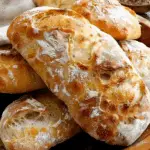
Irresistible Ciabatta Bread Recipe for Perfect Loaves
- Author: Olivia
- Prep Time: 20 minutes
- Cook Time: 32 minutes
- Total Time: 6 hours
- Yield: 2 medium loaves (4–6 sandwiches each)
- Category: Bread
- Method: Baking
- Cuisine: Italian
- Diet: Vegan
Description
This Ciabatta Bread features an open crumb, crisp golden crust, and chewy, rustic texture—perfect for sandwiches, toasts, or dipping in olive oil. It’s a high-hydration, artisan-style bread that’s surprisingly achievable at home.
Ingredients
- 4 cups (500g) bread flour
- 2 tsp instant yeast
- 1 1/2 tsp salt
- 1 3/4 cups (420ml) lukewarm water
- 1 tbsp olive oil (optional)
Instructions
- In a large bowl, whisk together bread flour, yeast, and salt.
- Add lukewarm water and olive oil (if using), stirring to form a sticky dough.
- Let the dough rest (autolyse) for 30 minutes, covered.
- Perform stretch-and-folds: fold dough over itself 4 times, rotating the bowl. Repeat every 30 minutes for 2 hours.
- Cover and bulk ferment for 1–1½ hours until bubbly and nearly doubled.
- Turn dough out gently onto a floured surface and divide into two loose rectangles.
- Transfer to a floured couche or parchment-lined tray. Cover and proof 45–60 minutes.
- Preheat oven to 475°F (245°C) with baking stone or steel and a steam tray.
- Steam oven by adding hot water to tray or spraying walls, and bake loaves for 20 minutes with steam.
- Remove steam source and bake another 10–12 minutes until crust is deep golden and crisp.
- Cool on a rack for at least 30 minutes before slicing.
Notes
- Use bread flour for stronger gluten structure and bigger holes.
- Wet or oil hands when handling sticky dough to avoid tearing.
- Add herbs or olives after the bulk ferment for flavor variations.
- Bake on a hot stone or heavy steel sheet for best crust development.
- Cool fully to preserve open crumb before slicing.
Nutrition
- Serving Size: 1 slice (1/12 of a loaf)
- Calories: 130
- Sugar: 0g
- Sodium: 210mg
- Fat: 1.5g
- Saturated Fat: 0.3g
- Unsaturated Fat: 1.2g
- Trans Fat: 0g
- Carbohydrates: 26g
- Fiber: 1g
- Protein: 4g
- Cholesterol: 0mg

